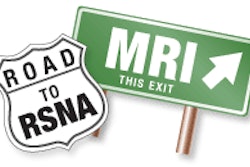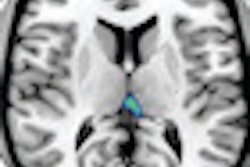"MRI provides a global picture of the shoulder, including soft-tissue and labral pathology," said lead author and presenter Thomas Magee, MD, managing partner at Neuroskeletal Imaging in Merritt Island, FL. "It is capable of determining if a tear is displaced prior to the surgeon performing arthroscopy."
The retrospective review analyzed 100 consecutive patients who had shoulder labral tears noted on MRI and who eventually had surgery. Those surgical reports were then correlated with the MRI results to determine whether surgical intervention, such as surgical tacking or debridement, was subsequently performed on the lesions described at MRI.
Among the 100 cases, MRI illustrated 72 patients who had superior labral anterior to posterior (SLAP) tears, 38 patients who had posterior labral tears, and 28 patients who had anterior labral tears. All 100 patients went on to have arthroscopic procedures, with arthroscopy identifying the same conditions in the same number of patients as the MRI.
Among the 72 SLAP tear cases, 64 tears were described as fraying on arthroscopy. Of those 64 cases, 14 patients were debrided. In the remaining 50 cases, no surgical intervention was performed.
The remaining eight SLAP tear patients were described as SLAP tears on arthroscopy and surgical tacking was performed. Among the 38 posterior labral tears, 36 cases were described as fraying on arthroscopy. Of those 38 cases, seven patients were debrided. No surgical intervention was necessary for 29 patients. Two of the 38 patients had surgical tacking performed arthroscopically.
The analysis also confirmed that of the 28 anterior labral tears described at MR, 26 patients had surgical tacking performed. The remaining two patients had their anterior labrum debrided arthroscopically.
"The clinical benefit is that MRI can provide a useful preoperative roadmap for the surgeon," Magee said. "In most cases, with careful observation, the radiologist can alert the surgeon that a labral tear is displaced and, therefore, [is] likely a surgical lesion versus a nondisplaced tear that often does not require surgery."
Magee and colleagues plan to continue research in this area, as they look to provide useful and comprehensive interpretations for the surgeons to guide their surgeries. "One way in which we wish to progress beyond the current study is to assess how well 3D MRI enhances the surgeon's roadmap for surgery," he added.



















